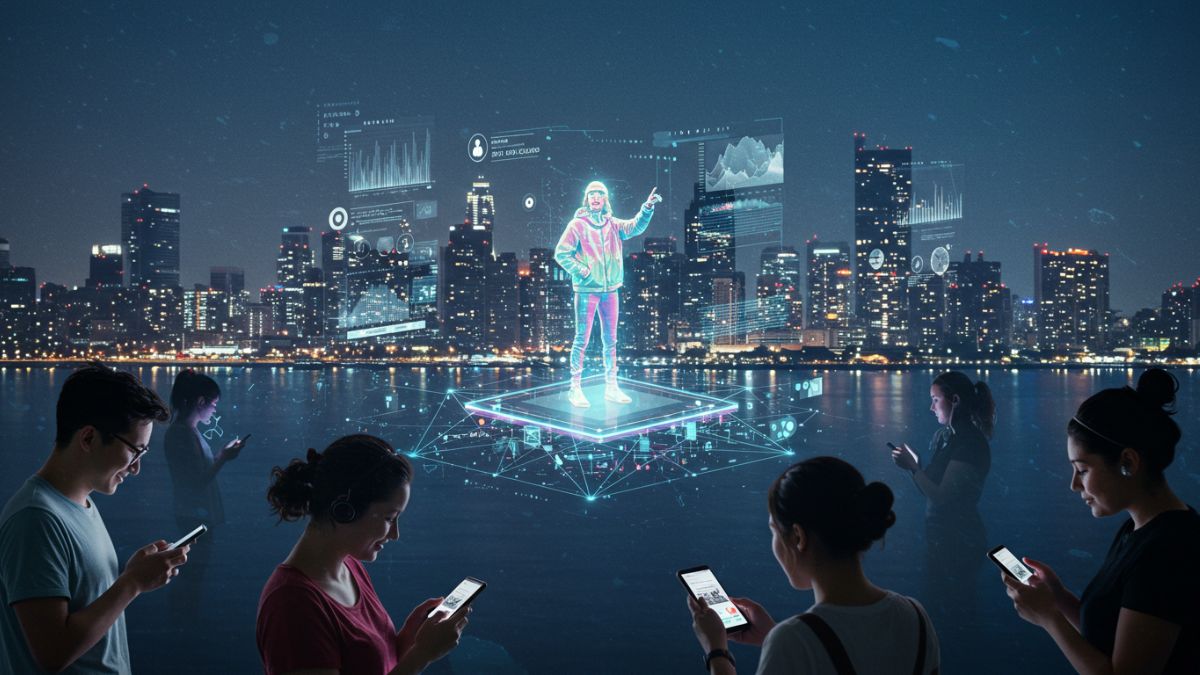Introduction
In the ever-evolving world of social media, influencers have become the new-age celebrities, wielding immense power over consumer behavior, cultural trends, and even political discourse. However, as the influencer economy grows, so does the phenomenon of “influencersgonewild”—content creators who push boundaries, spark controversies, and sometimes crash and burn in the public eye.
From viral stunts and outrageous behavior to scandalous revelations, these influencers captivate audiences while reshaping digital culture. But what drives them to cross the line? How do their actions impact social media platforms, brands, and their followers? And what does this trend reveal about the darker side of online fame?
This article explores the rise of wild influencers, their psychological motivations, the consequences of their actions, and how they continue to redefine the digital landscape.
The Rise of the Wild Influencer
Social media platforms like Instagram, TikTok, and YouTube have democratized fame, allowing ordinary individuals to amass millions of followers overnight. While many influencers build their brands on authenticity and relatability, others thrive on shock value, controversy, and rule-breaking behavior.
Why Do Influencers Go Wild?
Several factors contribute to influencers engaging in extreme or outrageous behavior:
-
The Algorithm’s Demand for Engagement
-
Social media algorithms favor content that generates strong reactions—whether positive or negative.
-
Extreme stunts, drama, and scandals often lead to higher visibility and virality.
-
-
Monetization Through Notoriety
-
Controversial influencers often secure brand deals, sponsorships, and media attention precisely because of their unpredictability.
-
Platforms like OnlyFans, Patreon, and Kick reward creators who push boundaries.
-
-
Psychological Factors
-
The pressure to stay relevant can lead to risk-taking behavior.
-
Some influencers suffer from narcissistic tendencies or addiction to validation, driving them to increasingly extreme acts.
-
-
Competition in the Attention Economy
-
With millions of creators vying for attention, standing out often requires breaking norms—sometimes in dangerous or unethical ways.
-
Examples of Influencers Gone Wild
-
Logan Paul’s Suicide Forest Video – Faced massive backlash for filming a deceased individual in Japan’s Aokigahara forest.
-
Andrew Tate’s Banned Persona – Gained fame through hyper-masculine, controversial takes before being deplatformed.
-
Belle Delphine’s Shock Marketing – Rose to fame with bizarre, NSFW content, including selling her “gamer girl bathwater.”
-
The “TikTok Outrage Economy” – Creators like Brittany Broski, Trisha Paytas, and Jake Paul leverage drama for clicks.
These cases highlight how shock content can skyrocket an influencer’s career—or destroy it overnight.
The Impact of Wild Influencers on Digital Culture
1. Normalization of Extreme Behavior
When influencers engage in reckless stunts (e.g., dangerous challenges, public pranks), their followers—especially younger audiences—may mimic them, leading to real-world harm.
-
Example: The “Tide Pod Challenge” led to poison control warnings after teens imitated influencers eating detergent.
2. Erosion of Authenticity
Many influencers fabricate drama or stage controversies purely for engagement, making it harder for audiences to distinguish between real life and performance art.
3. Brand Risks and Backlashes
Companies partnering with controversial influencers risk public relations disasters if their endorser goes rogue.
-
Example: PewDiePie’s past controversies led Disney to cut ties with him.
4. Platform Crackdowns and Policy Changes
Social networks frequently update guidelines to curb harmful behavior, sometimes leading to mass deplatforming (e.g., Alex Jones, Andrew Tate).
5. Mental Health Consequences
-
For influencers, the pressure to stay viral can lead to burnout, substance abuse, or psychological breakdowns.
-
For audiences: Constant exposure to extreme content may contribute to anxiety, self-esteem issues, and desensitization.
The Psychology Behind the Madness
1. The Dopamine-Driven Feedback Loop
-
Likes, shares, and comments trigger dopamine releases, reinforcing extreme behavior.
-
The more outrageous the content, the stronger the engagement—creating a dangerous cycle.
2. Narcissism and the Pursuit of Fame
Studies suggest that many influencers exhibit narcissistic traits, craving constant admiration and validation.
3. The “Reality Distortion Field” of Social Media
-
Online personas often blur with reality, leading influencers to believe their own hype—or spiral when fame fades.
4. The Role of Parasocial Relationships
Fans develop one-sided emotional bonds with influencers, making them more forgiving of bad behavior—or more likely to engage in toxic fan wars.
How Platforms and Society Are Responding
1. Stricter Content Moderation
-
TikTok, Instagram, and YouTube now flag or remove harmful content faster.
-
Demonetization and shadowbanning are used to curb extreme influencers.
2. The Rise of “Cancel Culture”
-
Public backlash can end careers overnight (e.g., Shane Dawson, James Charles).
-
However, some influencers rebound stronger after controversy (e.g., Logan Paul in WWE).
3. Shift Toward Micro-Influencers
Brands are increasingly favoring smaller, more authentic creators over risky mega-influencers.
4. Mental Health Awareness in Influencer Culture
-
Some creators are speaking out about the dark side of fame, advocating for better work-life balance.
Conclusion: The Future of Wild Influencers
The phenomenon of influencers gone wild reflects broader societal issues—our obsession with fame, the monetization of outrage, and the psychological toll of digital validation. While some creators will continue pushing boundaries for clout, platforms, audiences, and brands are becoming more cautious.
The future may see:
-
More regulation on influencer marketing.
-
A decline in shock content as audiences grow weary of drama.
-
Greater emphasis on authenticity over sensationalism.
One thing is certain: as long as social media exists, there will always be influencers willing to go wild for attention—but whether society keeps rewarding them remains to be seen.
Final Thoughts
The digital landscape is shaped by those who dare to stand out—for better or worse. While wild influencers dominate headlines today, the long-term impact of their behavior will depend on how platforms, followers, and brands respond. The question is, will we continue to enable them or demand better?
Would you follow an influencer known for controversy, or do you prefer authenticity? Let us know in the comments!
